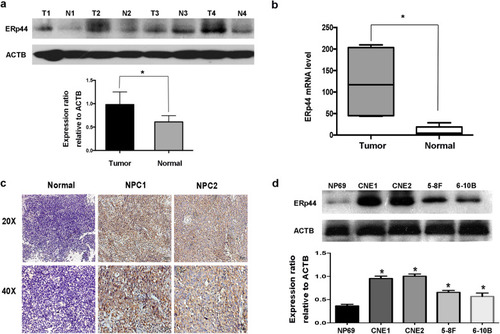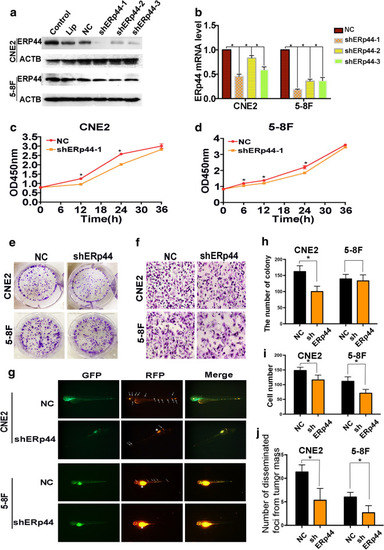- Title
-
ER resident protein 44 promotes malignant phenotype in nasopharyngeal carcinoma through the interaction with ATP citrate lyase
- Authors
- Tian, H., Shi, S., You, B., Zhang, Q., Gu, M., You, Y.
- Source
- Full text @ J Transl Med
|
ERp44 was highly expressed in NPC. |
|
Interference of ERp44 expression could inhibit the malignant phenotype of NPC cells. PHENOTYPE:
|
|
ERp44 could interact with ACLY in NPC cells. |
|
The binding between ERp44 with ACLY was critical for ERp44-mediated regulation of NPC metastasis. |
|
ERp44 promoted NPC cells growth in vivo. |





